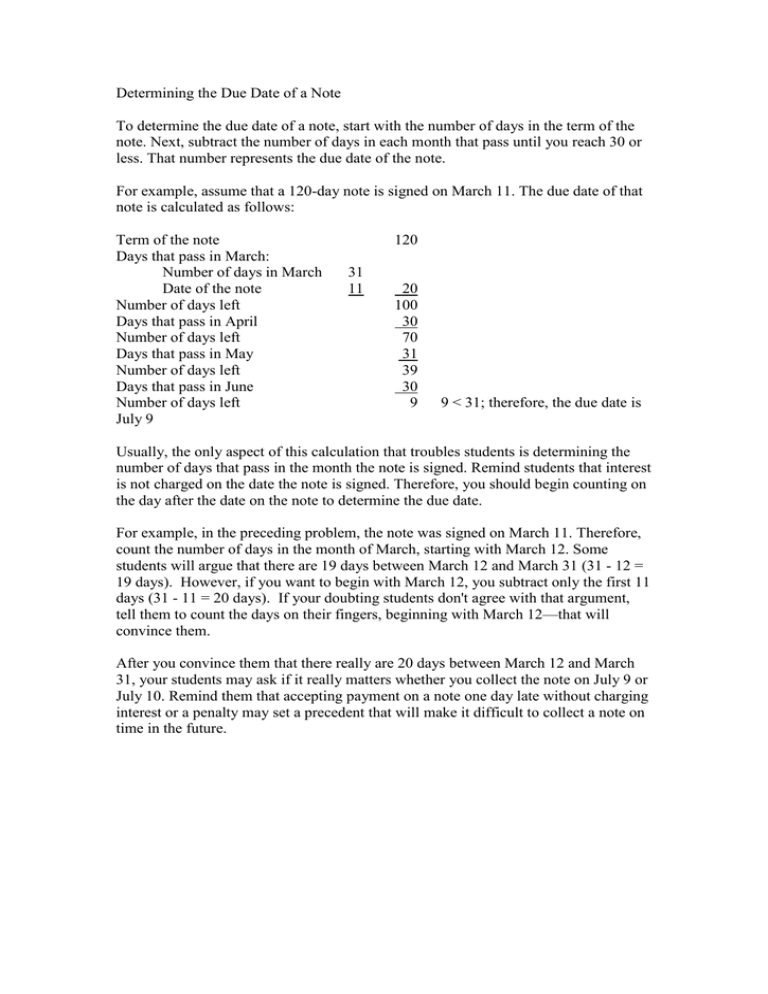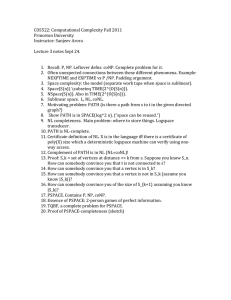Determining Note Due Dates: A Step-by-Step Guide
advertisement

Determining the Due Date of a Note To determine the due date of a note, start with the number of days in the term of the note. Next, subtract the number of days in each month that pass until you reach 30 or less. That number represents the due date of the note. For example, assume that a 120-day note is signed on March 11. The due date of that note is calculated as follows: Term of the note Days that pass in March: Number of days in March Date of the note Number of days left Days that pass in April Number of days left Days that pass in May Number of days left Days that pass in June Number of days left July 9 120 31 11 20 100 30 70 31 39 30 9 9 < 31; therefore, the due date is Usually, the only aspect of this calculation that troubles students is determining the number of days that pass in the month the note is signed. Remind students that interest is not charged on the date the note is signed. Therefore, you should begin counting on the day after the date on the note to determine the due date. For example, in the preceding problem, the note was signed on March 11. Therefore, count the number of days in the month of March, starting with March 12. Some students will argue that there are 19 days between March 12 and March 31 (31 - 12 = 19 days). However, if you want to begin with March 12, you subtract only the first 11 days (31 - 11 = 20 days). If your doubting students don't agree with that argument, tell them to count the days on their fingers, beginning with March 12—that will convince them. After you convince them that there really are 20 days between March 12 and March 31, your students may ask if it really matters whether you collect the note on July 9 or July 10. Remind them that accepting payment on a note one day late without charging interest or a penalty may set a precedent that will make it difficult to collect a note on time in the future.




